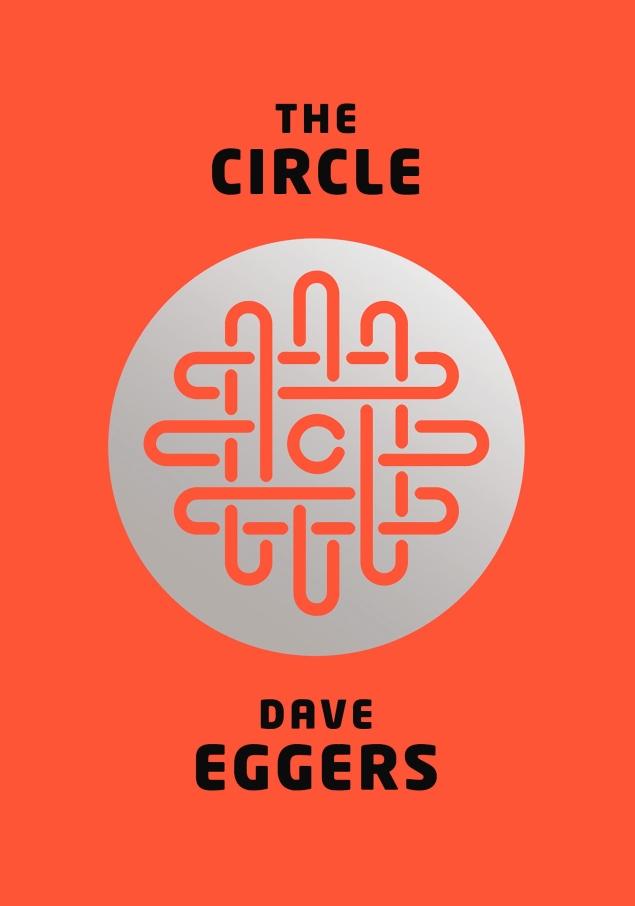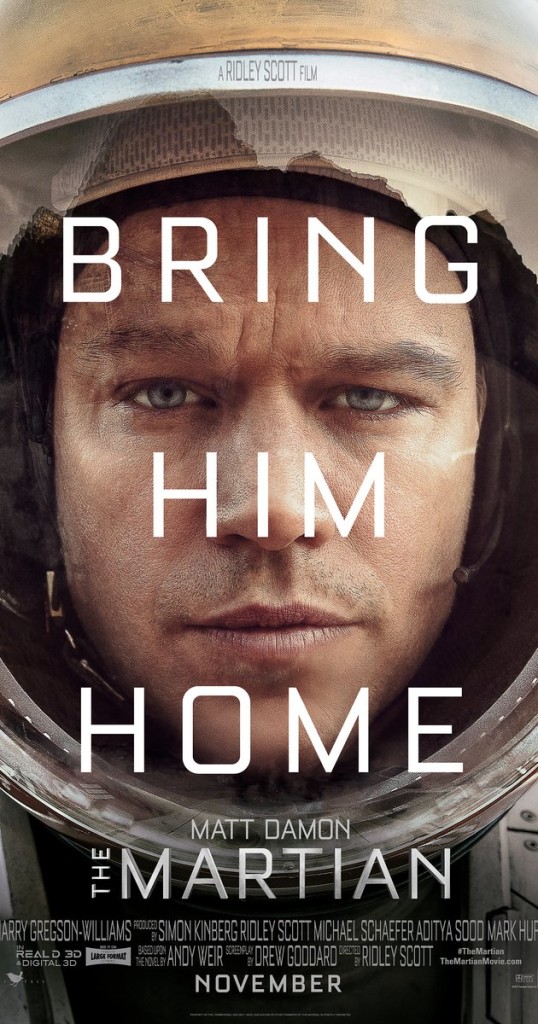I’m out of the office today but a quick reminder that I’ll be informing everyone who made the Scriptshadow 250 on October 3! That’s a Saturday. Hopefully this will prevent all of you from pulling any more hair out. In the meantime, today is a good old-fashioned “test your logline” post. Feel free to ask for Scriptshadow Nation’s feedback on a concept, a few pages of your script, or anything else you want help with. And dammit, don’t forget to enjoy your weekend!
Get Your Script Reviewed On Scriptshadow!: To submit your script for an Amateur Review, send in a PDF of your script, along with the title, genre, logline, and finally, something interesting about yourself and/or your script that you’d like us to post along with the script if reviewed. Use my submission address please: Carsonreeves3@gmail.com. Remember that your script will be posted. If you’re nervous about the effects of a bad review, feel free to use an alias name and/or title. It’s a good idea to resubmit every couple of weeks so your submission stays near the top.
Genre: Horror
Premise (from writer): A strange old man tells scary campfire stories to two young boys. But who is the man, why are the boys in the stories and where are their parents?
Why You Should Read (from writer): Early in the year, you wrote a couple of posts, the gist being – You want to stand out in the current spec market? You need to take risks. So, I sucked up that advice, threw caution to the wind and the result is this very different little horror script. It takes the sort of structural and narrative risks I normally wouldn’t.
Writer: Ashley Sanders
Details: 86 pages
Atmosphere.
Every horror film needs it.
But how much atmosphere is too much?
The most atmospheric horror movie of all time is probably Suspiria. Story is placed on the back burner in favor of terrifying imagery and eerie music. And it works like cheese on tacos. You don’t forget that movie after you’ve seen it.
Which I’m guessing was Ashley’s inspiration here. She says in her WYSR that she wanted to move away from convention. As long as you have a solid understanding of storytelling, I encourage this.
But what I often find happens to a writer going off on one of these “experimental” journeys is that they embrace the “fuck it” attitude a little too excitedly. It’s as if they think NOTHING should make sense, less the script fall back into the dreaded “c” word (convention).
But even when you’re writing something different, you still need to follow some rules. Just like if you wanted to build a house that nobody’s built before, there are still some common things you’ll need to add – like walls.
Small Slices walked that line a little too liberally and while there’s some good stuff here, I’m not sure there are enough walls to keep it from falling down.
The script takes place in a forest at night, with a man known simply as “the storyteller” telling two brothers, Mark (7), and Tom (9), (both played by Michael Shannon), a series of scary stories.
The stories center on a family led by shady businessman David and his trophy wife, Sara, who have two kids named, you guessed it, Mark and Tom.
One day, the couple receives a mysterious grandfather clock in the mail. While their initial inclination is to turn it away, the thing looks so old and interesting that they figure it might be worth some money, so they keep it.
Tick tock. Bad move.
Every night at 4:20 AM, the doors to the clock open and some creepy cardboard puppet-kids come out and do a little creepy dance. This is followed by the sound of scratching, which eventually moves beyond the clock and into the walls of the house, resulting in a lot of spooked out family members trying to figure out what the hell is going on.
Occasionally, we’ll break out of this story to come back to the Storyteller, who will tell little side stories about the characters, some of which turn them into different people doing inexplicable things.
One of my favorites was when Sara walks through the park to see a man standing next to tree with a bunch of whining dogs tied up to it. It turns out the man is digging a hole to bury the dogs in. He asks for Sara’s help, and she obliges.
But as the hole gets deeper, the man disappears, and the park’s residents, furious that this woman has stolen all their dogs and was planning to bury them, proceed to bury Sara alive! Yeah, talk about creepy!
Eventually, our family gets rid of the grandfather clock, but by then, it’s too late. The clock’s scratch-happy inhabitant has moved into the walls. And he’s not leaving until he turns a few family members into clock pie.
Just from this synopsis, you can tell there’s some fertile horror ground to play with.
But the script’s over-dependence on dream sequences made it hard to stay interested in. Dream sequences don’t fit well into movies. You should avoid them like gas station hot dogs. The few that succeed, though, tend to be of the horror variety. That’s because you can throw some creepy shit in a dream sequence and people will be scared.
However, if that’s all you’re doing, after awhile, the audience will pull ahead of you. They figure out your trick and get a general sense of what you’re going to do before you do. Once the audience is ahead of the writer, the movie’s dead. You can’t allow the audience to lead the parade.
For instance, we get a late scene where David is on a subway train and you just know he’s going to see something creepy (in this case, a woman with a weird screaming baby-face). Cause that’s how all these dream sequences have been.
1) Character enters location.
2) Something feels off about location.
3) They see something creepy.
The reason my favorite scene in the script was the Sarah-buried-alive scene was because it went against this formula. It was a different scenario that we weren’t used to.
This is something writers should be concerned about across all genres. Are they repeating themselves? Because if you’re repeating yourself in any aspect of the story, you’re giving the reader the opportunity to get ahead of you.
As I’ve said before, your job as a writer is to constantly monitor what you think the reader is expecting so you can give them something different. Use their expectations against them!
There’s a reason The Shining is more popular than movies like Suspiria and Jacob’s Ladder. All three films are good in their own way. But The Shining puts the most thought into its story. I strongly believe that audiences want to be led somewhere. They want you to take them. And if the rules get too blurry along the way, you lose them. Or at least, you lose a lot of them.
You also want to keep in mind that while this would probably make a really cool looking movie (there’s some creepy-ass imagery, that’s for sure), horror directors are experts in coming up with creepy-ass imagery. They don’t need you to achieve this part of the puzzle. What they don’t have, however, is the ability to come up with a captivating story. That’s where they’re weakest and so that’s your main way to tempt them. Give them a story they can’t say no to.
With that said, there’s something interesting about the writing here. There are some strong moments (the aforementioned buried-alive scene). I loved how Ashley SHOWED instead of TOLD in a lot of places. It’s just that, on the whole, it felt a little half-baked. You finish and get the sense that the fireplace storyline wasn’t thought through at all. You could’ve created some real tension in those scenes and punctuated it with a nice end-of-the-movie twist. Instead, the kids just go back into their tents and call it a night.
But hey, nobody said this screenwriting stuff was easy. Ashley’s got the tools. I’d like to see her use those tools to build a better foundation though.
Script link: Small Slices
[ ] what the hell did I just read?
[x] wasn’t for me
[ ] worth the read
[ ] impressive
[ ] genius
What I learned: Beware the dream sequence in any of its forms. And if you are going to use it, use it sparingly. Most readers/audiences will get impatient if too much of the story is told in a formless state. Solid foundation-based storytelling is the way to go. Trust me!
One of the HARDEST things to do in Hollywood is be consistently good. There are so many factors working against making a good movie that very few people in the business are able to do it consistently. It’s why the writer-director of The Sixth Sense can also make The Happening. It’s why the director of American Beauty can also make Jarhead. It’s why the writer-director of the great Jerry Maguire can also give us… Aloha??
Think about all the things that can go wrong. The budget can be slashed in half at the last second. An actor can show up on set and demand a page 1 rewrite of his part. The director can drop out the day before the movie starts. The financing can come in suddenly, forcing you to start your movie before the script is ready. Your romantic leads who had great chemistry in rehearsals, can sleep together and, all of a sudden, the spark is gone. When you think about all of the things that are out of your control in filmmaking, it’s amazing that any good movies get made at all.
Which is why the people who do it consistently deserve attention. There’s a reason why these filmmakers are so obsessively coveted by the studios. Because they’re the only ones you can actually count on. So today, I’m going to give you five of the most consistently successful people in the business, and detail what they’re doing right that you can learn from. Let’s begin with the king of them all… Mr. Spielberg!
STEVEN SPIELBERG
Movies: Raiders of the Lost Ark, Jurassic Park, E.T., the upcoming Ready Player One
Spielberg is the best in the business at recognizing the big idea. But here’s the reason he’s so consistently successful with those big ideas while his imposters consistently fail. Spielberg adds a childlike sense of wonder to his stories, a simplicity of observation that makes them immensely accessible to both kids and adults. You see this even when he doesn’t have a child in the lead role. Spielberg still asks the question, “What kind of cool stuff would a child want to see here?” This formula for success shouldn’t be a surprise. It’s the same formula Pixar uses. Childlike wonder done with a level of sophistication. It’s such a simple approach, you wonder why others can’t replicate it. The reason is that everyone who tries to add that childlike sense of wonder goes too far into juvenile territory (fart jokes, “stepping in doo-doo” jokes – a big reason why The Phantom Menace failed). That turns off the majority of adult audiences, slashing the potential box office in half. The recent “Teenage Mutant Ninja Turtles” is a good example of this approach in action. The childlike sense of wonder is replaced with a juvenile sense of pandering. It’s impossible for an adult to enjoy that movie, leaving the film successful, but a far cry from “Spielberg successful.”
JAMES CAMERON
Movies: Titanic, Aliens, The Terminator, The Abyss, Avatar
Whereas Spielberg appeals to the child in all of us, Cameron appeals to the teenager in all of us. He ramps up the Spielberg “big idea” approach and adds a new ingredient: “attitude.” As much as I love Spielberg, he’ll never direct an action sequence as cool as the LA aquaduct chase in Terminator 2. Speaking of that scene, Cameron is one of the few directors who thrives on pushing the envelope. If you watch most Hollywood movies, it’s directors copying whatever the latest big movie did (remember how many movies did “bullet time” after The Matrix?). Cameron asks himself, “What can I do that’s never been done before?” Just by asking that question, you open your story up to amazing possibilities. A lesser known key to Cameron’s success is his “on-the-nose” approach. Cameron is not afraid to spell it out for audiences (Sarah Conner’s drawn out voice-overs detailing our inevitable demise as a species in Terminator 2, for instance). But while this may annoy frequent cinephiles bored with conventional film, the casual moviegoers who need a little more clarity in their cinematic cereal love it. Here’s the interesting thing though. Film snobs hate every other on-the-nose filmmaker outside of Cameron. How does he manage to escape their wrath? Because there’s no other filmmaker more obsessed with detail than Cameron. The guy fucking spent years inventing alien plant life for his fake world in Avatar. Geeks LOVE that shit. Because details matter. Consider the hack who recently took over the latest Terminator movie. In that film, a key scene from the first movie is recreated. Except the director decided to CHANGE one of the character’s hairstyles (he had a blue Mohawk in the original – not in the new one)!!! It’s this casual attitude towards details that leads to so many forgettable films.
DAVID FINCHER
Movies: The Game, The Social Network, Fight Club, Benjamin Button, Gone Girl
Just like Cameron, Fincher is OBSESSED with details. Except whereas Cameron is obsessed with his worlds and his props and his gadgets, Fincher is obsessed with everything in the frame, from the lighting to the set decoration to the camera angle to the positioning of the actors to the placement of that whiskey bottle on the back mantle that nobody in the audience is ever going to notice. When you watch a David Fincher movie, you’re watching a film from a man who CARES. And that’s not always the case with movies. In addition to this, Fincher has an amazing ability to identify dark populist material. He is, in many ways, the R-Rated Spielberg. One thing that’s separated Fincher as of late is his interest in structurally challenging stories. From Fight Club to Zodiac to Benjamin Button to Gone Girl, these are movies that don’t have that safe straight-forward Act 1, Act 2, Act 3 setup. While I believe you need to learn to tell simple stories first (which is exactly what Fincher did, with movies like Panic Room and The Game), once you have that understanding of traditional structure down, scaring yourself and taking on non-traditional narratives is a great way to stand out.
QUENTIN TARANTINO
Movies: Pulp Fiction, Inglorious Basterds, Django Unchained
Tarantino is probably the hardest screenwriter/director to learn from because his style and voice are so unique, if you try to do what he does, you end up looking like a not-as-good version of Quentin Tarantino. With that said, there are a couple of things we can take away from the man. More than any other writer in the business, Tarantino creates strong fascinating memorable characters. Almost every one of his characters is unique in some way, is larger-than-life in some way, and is fun to watch on the screen. In so many scripts I read, writers put little effort into creating characters that stand out. I get the feeling whenever Tarantino sits down to write a character, he asks himself, “How can I make this character memorable?” And he goes from there. A lot of people assume the key to Tarantino’s success is his dialogue. But that’s not true. The reason his dialogue is so good is because he makes his characters so interesting in the first place. If you write interesting characters, they’re going to say interesting things. Which means the dialogue writes itself. This is also why Tarantino can stay in scenes for so long. It’s because of the work he did long before those scenes were written (creating unique interesting characters). So if you want to be like Tarantino, don’t try and write “cool,” or “weird” stuff. Ask yourself for each one of your main characters: “How can I make this character interesting and memorable?” Do this and everything else will fall into place.
CHRISTOPHER NOLAN
Movies: Memento, Inception, The Dark Knight, Interstellar
Nolan doesn’t yet have the pedigree that the rest of the entrants on this list have, but he’s done all right for himself. And there’s one thing Nolan does better than anyone I’ve mentioned so far. He’s not afraid to make you think. Nolan sees the theater as an opportunity to not just entertain an audience, but to challenge them. And unlike a lot of other filmmakers – like David Lynch, like Darren Aronofsky – who likewise enjoy challenging audiences, Nolan is the only one who likes to do so in big high-concept packages. The formula almost seems too obvious. Big ideas that make you think. Why didn’t I think of that? Another thing that Nolan does well is he takes a realistic approach to all of his big ideas. He’s like the anti-Michael Bay in that sense. Whereas other blockbusters (Independence Day, 2012) feel hokey in their approach to physics and logic, leaving the story feeling schlocky and cartoonish, this “realism above all else” approach gives Nolan’s films an additional layer of depth. As crazy as some of the ideas are (dream heists?) you get the feeling that if they were introduced into the real world? This is how they would go down.
My big takeaway from these five titans? Come up with a big concept. Treat it with a childlike sense of wonder or realistic plausibility, whichever you think will work better for your particular idea. Challenge yourself to create larger-than-life memorable characters. Push yourself into narrative areas that make you a little afraid. And above all, pay attention to the details. Now go write that million dollar spec!
Genre: Social Media Thriller??
Premise: A young woman eagerly joins the fastest rising tech company in the world, losing herself in the company’s agenda to rewrite how we live our lives.
About: This project is rapidly approaching red-hot status. It stars Tom Hanks, Emma Watson, John Boyega (Star Wars: The Force Awakens) and internet demigod, Patton Oswald. The script was written (and will be directed) by James Ponsoldt, bassed on the novel by Dave Eggers. Ponsoldt is best known for his realistic exploration of high school in The Spectacular Now. But with “Circle,” he’ll be entering a whole new stratosphere in terms of budget and pressure. This has some high-octane (and blazing hot) actors in the film, with Boyega and Watson being on everyone’s “must have” list. This script must be amazing, right! Dave Eggers is a well-known novelist who tends to divide critics with his books. His most famous works include A Heartbreaking Work of Staggering Genius, You Shall Know Our Velocity, and A Hologram for the King (which Tom Hanks will also star in).
Writer: James Ponsoldt (based on the novel by Dave Eggers)
Details: 141 pages – November 22, 2014 draft
If you’re like me, you’re asking, “141 pages?? Why so long, bro??” Well, the first 20 pages of The Circle are dedicated to touring The Circle campus. If you can’t cut a tour down to under 20 pages, chances are your script’s going to run long.
And that’s what worried me when I remembered Ponsoldt wrote/directed “The Spectacular Now.” Now I liked The Spectacular Now. I thought its realism and unique angle into the traditional high school movie helped it stand out.
But if there was a problem with the script, it was that it didn’t have a plot. It kind of drifted along without a narrative spine. That can be done in a character piece, but if you have a thriller – like The Circle – you’re going to need structure. There needs to be goals, stakes, and urgency. And those first 20 pages of The Circle didn’t display any of that. How bout the last 120 pages?
24 year-old Mae Holland is having a rough time of it. Her father recently got diagnosed with MS and she’s got a shitty job that doesn’t pay the hospital bills.
That changes when she gets a job at The Circle. The best way to imagine The Circle is a cross between Google AND Facebook. Which is a little confusing, since the two companies couldn’t be more different. But that’s something you’ll want to get used to with this script. It’s pretty damn confusing.
Anyway, so Mae starts working for a department called “Customer Experience,” and quickly realizes how obsessive The Circle is. Every few minutes, her bosses check in on her via text. “You okay?” “Anything we can do?” “Why did you only get a 97 approval on your last customer experience?”
The thing is, Mae’s a trooper. She never gets too upset and so takes the texts in stride. This will prove to be her undoing, when the company announces that they’re ushering in a new technology called “Transparent,” that forces its employees to wear a camera wherever they go so that their lives are broadcast to the world 24/7. And Mae will be one of the first users!
As a result, Mae becomes a celebrity, with millions of followers watching her every move. Mae is out front on every mandate The Circle lays down, including its desire to legally FORCE every single person in the United States to sign up for a Circle Account.
As Mae’s 24/7 broadcast begins to freak her friends out and shrink her social circle, Mae continues to push the message, making sure the world knows that The Circle is the future… to everything.
Let me start off by saying…
What the fuhhhhhhhhh????
This has to be one of the strangest scripts I’ve read all year. If the idea here is to go with a zany-Janey-tone, a la The Truman Show? Maybe this movie has a shot. But I don’t know, man. This fucking thing is all over the place.
In fact, if I were pitching it, I would call it a social media thriller that focuses on a Google-Facebook company in the vein of 1984, that infuses itself with a touch of Scientology, and a healthy homage to the Matthew McConaughey starrer, ED TV. Hell, it even adds a little bit of Real Genius, with the company founder sneaking around campus in disguise half the time.
It’s just sooooo fuckkkkkking weird, dude.
But seriously, I never once understood what this script was trying to say. It starts off as a typical thriller, where we walk into a company and everything seems too perfect.
We gradually learn the company is evil, starting with its plan to put lollipop-sized cameras everywhere so they can watch everything.
This shifts to The Circle wanting to control the Senate.
That shifts to them wanting to do a Scientology-esque “transparence” thing, where Mae wears a camera wherever she goes. Then Mae turns into Matthew McConaghey’s character in ED TV, becoming a reality superstar.
Finally The Circle wants to pass a law to force everyone to sign up for an account and extend that into a FORCED PRESIDENTIAL VOTE! And if that doesn’t tickle your tailfeather, one of the final scenes has Mae chasing her ex-boyfriend in a pick-up truck with a dozen drones, broadcasting the stalking maneuver live in front of an audience, with them laughing away like a pack of crazed hyenas.
Okay, so let’s say that Ponsoldt miraculously nails the tone here. I hope he does. Because maybe we get a David Lynch version of a thriller.
But even if that happens, there’s still a major problem. Mae Holland is the most boring protagonist I’ve read in 2015. Not only is she dumb, but she spends the majority of the movie nodding her head, doing what others tell her to do, and not making any critical decisions on her own.
She is the world’s most reactive protagonist.
And I am SHOCKED that Emma Watson, the face of feminism, is okay with this. She’s playing a character who does what every man in this movie tells her to do.
For those of you wanting to avoid writing boring characters, what do I mean by this? What makes a protagonist boring? Well, remember this. The most important thing you can do for a character is give them a goal. If they have a goal, they will be ACTIVE in pursuing that goal, which immediately makes them interesting as a character, since we’ll instinctively want to see if they succeed in achieving their goal. We get none of that with Mae. Mae shows up at work and does whatever anyone says she should do.
In addition to this, you want something going on inside of your character. This is what gives them that elusive quality of “depth” all these producer-types keep telling you you don’t have enough of. Whether it’s a flaw they’re trying to overcome or something from their past they can’t quite resolve, they need to be battling something.
Mae isn’t battling anything. Her father is battling MS. But that’s her father. Occasionally, she’ll get upset about it. But never does this challenge her in a compelling way. If Mae was a workaholic and it caused her to abandon her father and family in their biggest time of need, now you have something. But we don’t get anything like that here.
I recently watched a documentary called Maidentrip, about a 14 year-old girl, Laura, who sails around the world all by herself. Eventually, it’s revealed that Laura was devastated when her parents divorced, her mom moved away, married someone else, had a NEW daughter, and then barely spoke to Laura anymore. This sailing adventure was a way to run away from that problem. But Laura eventually realizes she can’t run away from this. She must face it.
That’s what I mean by INNER conflict – something/anything your character is battling inside that can add more than what we see on the surface. This tiny little documentary had that. This big studio flick, unfortunately, did not.
In closing, all I can say is I hope they tightened up the script. My instinct is to say that the source material is faulty. Eggers’s stuff has always been a little left-of-center and maybe not the best material to turn into a movie. But Ponsaldt doesn’t help by drawing the narrative out and, as a result, exaggerating the story’s lack of focus.
And focus is everything in screenwriting. A script needs to be tight. This was very much the opposite.
[ ] what the hell did I just read?
[x] wasn’t for me
[ ] worth the read
[ ] impressive
[ ] genius
What I learned: If you’re trying to say a million things with your screenplay, you won’t say anything. That was the problem here. A lollipop-camera takeover of the world, broadcasting our lives 24/7, exploring the cult mentality of tech businesses. It was too much to wrangle in, which led to The Circle feeling scattered and confused. Pick one!
Genre: Sci-fi
Premise: When a resilient and clever astronaut gets stuck on Mars, he must use every trick in the book to get rescued.
About: The Martian is one of the most anticipated movies of the fall. It’s got a great story behind it, too. Andy Weir self-published the book when he couldn’t get any publishers to bite. When it still didn’t sell, he was devastated. But then, just when he believed the book was a failure, sales began to pick up. Good old word-of-mouth propelled the book into a phenomenon, and Ridley Scott and Matt Damon came on in one of those rare “fast-track” scenarios that all writers dream of. The Martian is adapted by Drew Goddard, who’s become one of the biggest screenwriters in the business. He wrote for Lost, Cloverfield, World War Z, Cabin in the Woods, and Netflix’s Daredevil.
Writer: Drew Goddard (based on the book by Andy Weir)
Details: 10/4/13 draft
Last year, I wrote an “Adapt This Book” post about The Martian. The consensus I came to was that this would be a tough adaptation. You have one character, all by himself, in a tiny tent, doing math for hundreds of pages. How do you make that interesting?
But watching the recent trailers, I was surprised to see just how GOOD this movie looked. That seems to be the consensus of everyone who’s seen the trailers. People are REALLY FREAKING PUMPED for this movie! And it’s a reminder of just how much of a mind-fuck this business is. Why is it only obvious in hindsight how cool a movie can be? Because the idea of being stranded on Mars isn’t all that original. I’m sure someone’s thought of it (or something like it) before. Yet it’s this simple idea that’s captured the world’s imagination, and will probably make The Martian this year’s “Gravity.”
But for our sake – that sake being “how good is the f’ing script?” – I wanted to know how they’d tackled those “book-to-script” issues that worried me so much when I read the novel. So, let’s take a look…
For those who know nothing about “The Martian,” it follows Mark Watney, who was left for dead on Mars when his team had to make an emergency evacuation after a storm threatened to destroy their rocket home.
Word gets back to NASA that Watney didn’t make it, and the world is devastated.
There’s only one problem. Watney is very much alive.
Watney, a botanist, knows that the next mission to Mars is in four years. Which means he needs to figure out how to sustain himself for that long, which includes finding a food source on a dead planet. In his words, he needs to “science the shit out of this.”
Meanwhile, NASA’s Mars satellites pick up movement on the planet, allowing them to realize that Watney is still alive. After freaking out, they start designing a plan to save him.
When word arrives on the Mars mission ship heading back to earth that Watney is still alive, they decide to go against orders, turn around, and save him, despite the fact that they have no way to get back down onto the planet and actually pick him up. Will they succeed? Will Watney live? Is this script any good? I would answer these questions but I’d probably be spoiling the movie for you.
Okay, so my first adaptation worry was that Watney was communicating through a written diary. That doesn’t work in movies. So for the script, they went the Avatar route and changed it to a video-diary. This is probably the easiest solution when it came to the adaptation.
The next problem was you had 50-60 page chunks of Watney doing math. How oxygen needed to be coagulated to stabilize nitrogen and how that helped grow potatoes. Thankfully, Goddard got rid of all that. Which probably wasn’t an easy decision, since it’s the heart of the book and what Weir prided himself on (the realistic approach to the science side of the problem).
I was a little surprised at just HOW MUCH of this they cut though. Goddard makes the bold move to jump exclusively from major plot point to major plot point, skipping all that personal “I’m lonely and stuck on this planet” stuff in between. For example, whereas it would take 100 pages to get from Watney’s tent blowing up to him going out to find the Mars rover, here in the script it would take about 12 pages.
If there’s a lesson to take away from this script, it’s that. Screenplays aren’t made to explore the nuances of an event. You’ll have time to sneak a few in there. But ultimately, you have to keep the story moving, and we see that here.
Another thing that really surprised me was just how much time earth gets in this adaptation. In the book, it’s all about Watney. I’d say we stay with him about 70% of the time, and then cut back to earth 30% of the time.
I remember worrying about this when reading the book. I wondered how you could stay on a guy in a tent for 20 minutes at a time. Goddard and the producers appear to have had the same worry. Back on earth, lots of huge plot decisions are being made (the main one being how the hell are they going to save this guy before he runs out of food), so I guess they figured if that’s where all the action was, that’s where they needed to be. This has left us with a new ratio of 55% to 45% in favor of the earth scenes!!
But my spidey sense tells me that when Matt Damon came on (this draft was written a year before he became attached) he likely ordered more Watney time, and that appears to be what the trailers suggest. Still, it was interesting to see the script go away from Watney so much, almost as if they didn’t trust the movie to sustain itself when we were just with him.
Another adaptation issue I worried about was time. As you’re no doubt tired of hearing me talk about here, I believe that URGENCY is one of the key components to making a script work. Most movies you see take place within a 2-week period, and there’s a reason for that. It gives the story a sense of “SHIT NEEDS TO BE TAKEN CARE OF NOW.” If a story drifts on for too long without anything pushing it, the audience gets bored and loses interest.
But the one thing I keep forgetting is that a story needs to be as long as it needs to be. If your main character is stuck on Mars? And our scientific limitations say that we can’t get to him for another four years? Well, then that’s the time-frame you have to work with. As long as it makes sense to the audience, they’ll go with it.
And I liked the way Goddard handled time in the script. He wouldn’t make a huge deal about the passing time. We’d simply cut to a title: Sol 37. Then a few pages later. Sol 49. It was very unobtrusive and, in a way, made it so you weren’t even aware time was passing. That was clever.
Another thing I noticed – piggybacking off of yesterday’s post – is how much humor plays a role in Watney’s character. Watney has a very casual sarcastic sense of humor about the whole ordeal, and just like the humor in M. Night’s The Visit allowed us to fall in love with those kids, the focus on humor here ensures we fall in love with Watney.
A lot of energy in the screenwriting community is spent on determining how much you need to worry about making your protagonist likable, and my response to that is always: It depends on the movie. If you’re writing a movie where a serial killer is your protagonist, it doesn’t make a whole lot of sense to make the guy likable.
But in a movie like this, where your main character is all by himself with no one to talk to and you’re asking the audience to care enough about him for the world to spend 10 billion dollars to save him, then yeah, he’s got to be likable in some capacity. And giving your hero a sense of humor is one of the easiest ways to do that.
I’m going to finish up by saying something controversial but it’s something I’m feeling stronger about every day. The self-published book is the new spec script. With Hollywood terrified to take a chance on anything original, the self-published success story is the best of both worlds. It takes no money on your end to write and put the book up online. And when it sells a lot of copies, Hollywood gets their “proof-of-concept” they need to pull the trigger on a sale.
I say that to encourage you guys to try different avenues to get into this industry. Ask yourself if your idea would work as a novel and, if so, consider writing it as one. Even if you only do it once, you’ll have something tangible to point others to. In a business where a lot of writers don’t feel like “real” writers because they haven’t “made it” yet, this small victory can make your profession feel more real.
[ ] what the hell did I just read?
[ ] wasn’t for me
[x] worth the read
[ ] impressive
[ ] genius
What I learned: When adapting a book, write out all the major plot beats in the story. In your script, you’ll hit those plot beats every 10-15 pages – so fairly frequently. Here we had…
1) Watney is presumed dead and left on planet.
2) Watney needs food – starts growing potatoes.
3) Watney needs to communicate with Earth, goes on journey to find Mars Rover.
4) Watney’s decompression bay blows up, destroying his tent and all his food.
5) NASA tries to send Watney a supply ship.
6) The supply ship blows up on launch.
7) The Mars Mission crew decides to turn back and rescue Watney.
And so on and so forth. While a lot of the introspective stuff in between the book’s major plot points is great for novel readers, it’s not necessarily great for movie viewers, who want the story to move quickly. Which is why you see so much of that stuff excised in the screenplay version of “The Martian.”










